Get PeakVisor App
Sign In
Search by GPS coordinates
- Latitude
- ° ' ''
- Longitude
- ° ' ''
- Units of Length

Yes
Cancel
Share ×

Scan the QR code and open PeakVisor on your phone
❤ Wishlist ×
Choose
Delete
Slovenia is a small country located in south-central Europe. It is a bastion of natural beauty as its borders contain everything from high mountain summits to forests, grasslands, gardens, and alpine meadows. Slovenia contains 9738 named mountains, the highest and most prominent of which is Triglav, standing at 2,864 m (9,396 ft) tall with 2,055 m (6,742 ft) in prominence. Triglav is also the mountain featured on the flag and national coat of arms of Slovenia.
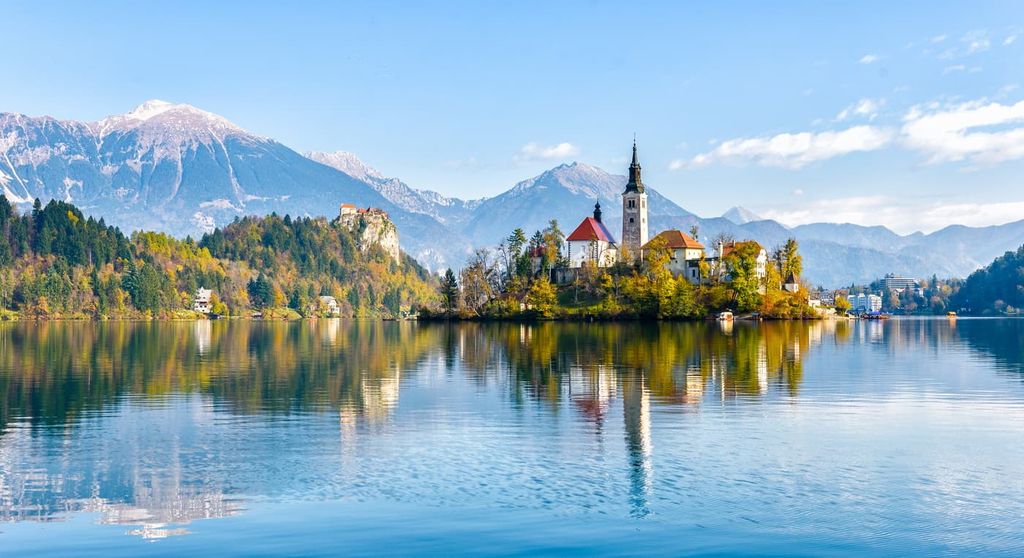
The country of Slovenia (officially the Republic of Slovenia/Republika Slovenija) sits at the intersection of central and southeast Europe. It is also located at the intersection of the Adriatic Sea (and thus the Mediterranean Sea), the Pannonian Plain, the Alps, and the Dinarides, giving it an interesting geographical and cultural makeup.
Slovenia is home to approximately 2 million people and it features a total land area of 20,271 square kilometers (7,827 sq. mi). This makes Slovenia the 150th largest country on Earth after Djibouti, Belize, El Salvador, and Israel, though it is just slightly larger than Fiji, Kuwait, and Eswatini.
Slovenia also shares its borders with a number of other countries. To Slovenia’s north are the states of Carinthia, Styria, and Burgenland in Austria.
There are several mountain ranges of the Southern Limestone Alps along or near the Austrian border, including, from approximately east to west, the Pohorje mountains, the Kamnik-Savinja Alps, the Karawanks, and the Julian Alps. Northern Slovenia is also home to the Slovene Prealps, the Carinthian-Slovenian Alps, and a small portion of the Styrian Prealps.
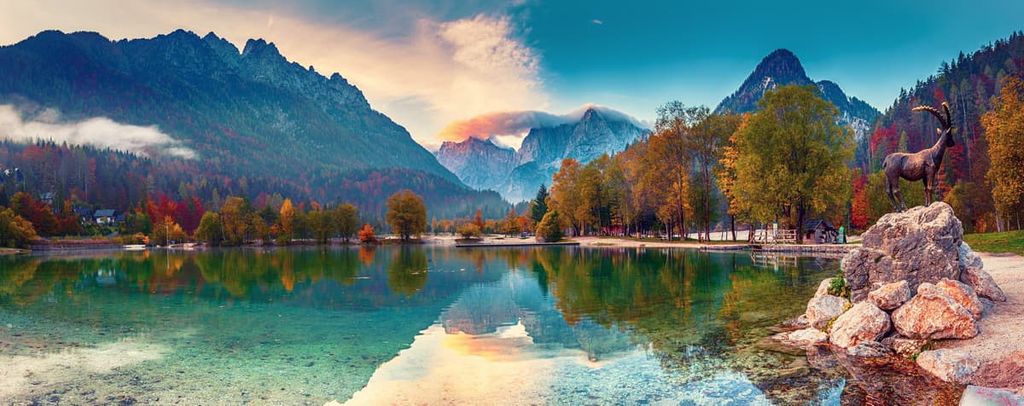
Triglav, the aforementioned tallest peak, is part of the Julian Alps, while Grintovec, Slovenia’s second most prominent peak, is the tallest point of the Kamnik-Savinja Alps, and Stol (Hochstuhl) is the tallest point of the Karawanks. Pohorje, located entirely within northeastern Slovenia, has its tallest point at Black Peak.
The Julian Alps share a border not just with Austria to the north but also with the region of Friuli-Venezie Giulia in Italy to the west. Though Italy heavily eats into Slovenia’s coastline, the country does have a coast on the Gulf of Trieste about 47 km (29 mi) long between Italy and its southern neighbor, Croatia. In this southwestern region of Slovenia is the Karst Plateau, surrounded by Istria to its south, and elsewhere by the Vipava Valley, Brkini Hills, and the gulf.
Croatia spans the entirety of southern and eastern Slovenia up to the northeast, where Slovenia shares a smaller border with Hungary. Around this area is the Pannonian Plain, making eastern Slovenia relatively flat, a stark contrast to the largely mountainous and hilly Slovenian landscape.
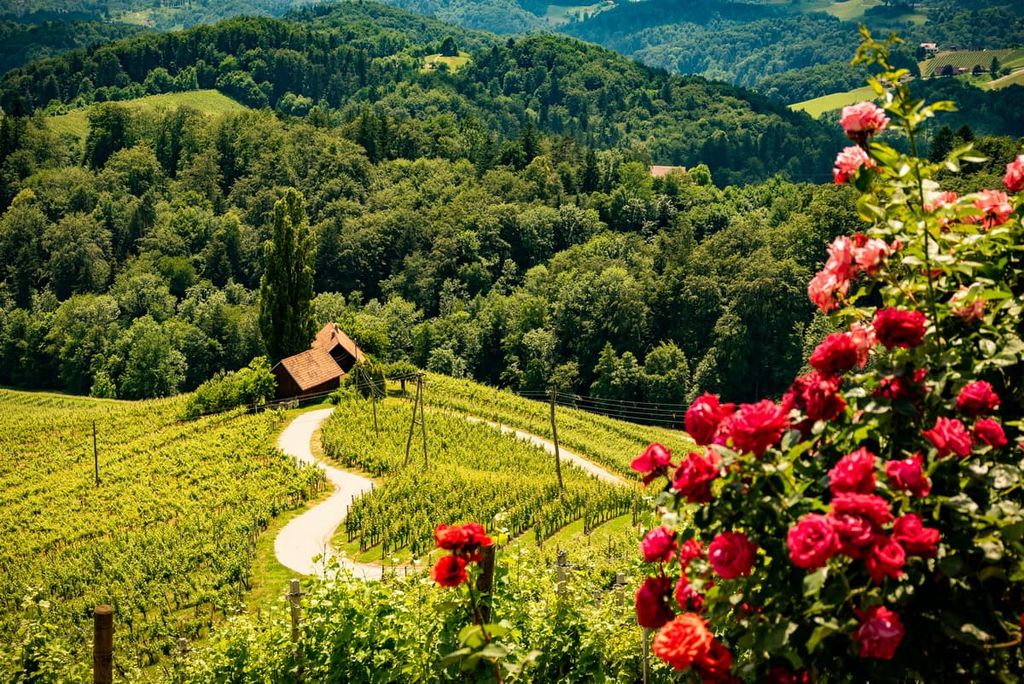
Running diagonally up Slovenia in a southeast-to-northwest direction are the Dinaric Alps, contributing to the mountainous nature of the country’s central regions.
Notably, not only is Slovenia very mountainous, but it is also very forested, being the third most forested country in Europe by percentage of total land area. There is only one natural lake in the entire country, Lake Bled, known for the tiny Bled Island at its heart.
The climate in Slovenia changes depending on one’s proximity to the sea and to the mountains. In the flatter parts of the northeast, far from the Adriatic, the climate is very continental, leading to a higher degree of variation between temperature highs and temperature lows.
Thus, winters in Slovenia are generally fairly cold and summers are generally fairly hot. Additionally, precipitation, while traditionally moderate throughout the year, occurs the most during the summer, usually in storms or heavier showers.
That being said, Slovenia’s mountainous regions tend to be particularly wet, with the high Alps generally receiving the most amount of precipitation in the country. These regions, of course, are usually rather cold, with only moderate variations in temperature from season to season.

Snow is fairly common in Slovenia, especially among the mountains. However, Slovenia’s coast has a sub-Mediterranean climate, with warm summers and cool winters.
The largest official subdivisions of Slovenia are its municipalities, of which there are 212; however, there are 62 administrative districts and, perhaps most importantly to the people of Slovenia, its traditional regions and subregions.
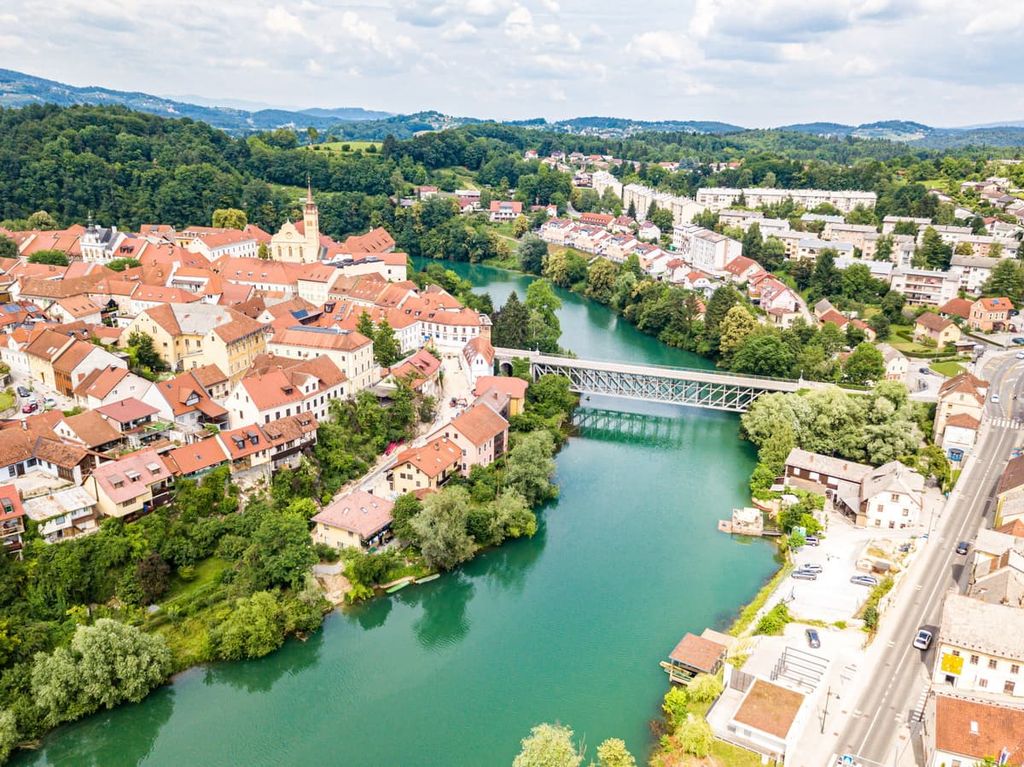
The traditional regions of Slovenia are:
However, note that almost half of Slovenia’s 2 million person population lives in Carniola while 35 percent, or around 705,000 people, live in Styria.
Ljubljana, Slovenia’s capital and largest city, is located in Carniola, and Maribor, its second largest city, is situated in Slovenian Styria.
Slovenia sits at a tenuous position along the Adriatic Plate, with the African Plate to its south and Eurasian Plate to its north. This means that earthquakes and other seismic activity occur in the country with moderate frequency.
As mentioned, Slovenia is also at the intersection of the major geological units of the Dinaric Alps, the Alps, and the Pannonian Basin, creating an interesting patchwork of geological features and landforms.

Notably, Slovenia’s bedrock and foundation consists largely of carbonates, particularly in the southwest, where karst topography dominates the landscape. As limestone is highly vulnerable to the effects of water and precipitation, features like gorges, ravines, and cave systems are common in Slovenia.
This Karst Plateau is the result of the influence of the Dinaric Alps, a complex of Mesozoic limestone and dolomite whose orogeny dates back to the Cenozoic. The Žumberak Mountains and hills in the southeast are part of the Dinarides, as are many other Slovenian mountains, the result of a collision between the Adriatic plate and the rest of Europe.
Slovenia’s Alps, which are part of an extensive mountain range whose orogeny began in the Late Mesozoic as a result of the collision between Eurasia, Africa, and India, also have a calcareous nature. Indeed, the Julian Alps, Kamnik-Savinja Alps, Karawanks, and Pohorje mountains are all considered members of the Southern Limestone Alps, a calcareous mountain range of Mesozoic and Tertiary-aged limestone and dolomite.
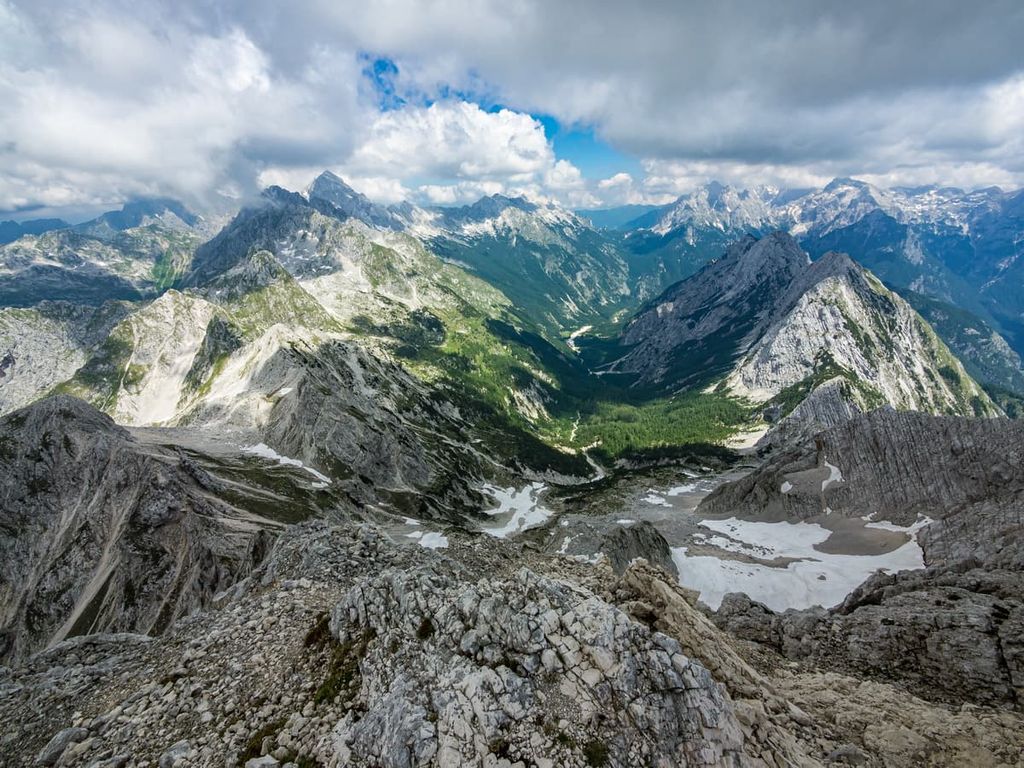
Pohorje, however, is also considered part of the likewise Mesozoic and Tertiary Central Alps, though it itself is a younger massif with Paleozoic metamorphic rocks around its periphery.
Internally, the mountain is home to more igneous rocks, such as granodiorite and dacite, than many of its neighbors. White marble has also been found and quarried along its southern slopes.
Northern Slovenia is also home to some of or extensions of the Lavanttal Alps, such as the metamorphic Koralpe range and the crystalline rocks of the Kozjak Mountains.
Considering how heavily forested Slovenia is and its reputation as one of the world’s most sustainable countries, it comes as no surprise that it is a country of great biological richness and diversity.
The country is home to four terrestrial ecoregions, at least 75 species of mammals and dozens, if not hundreds of bird species. It also claims dozens of endemic species that can be found nowhere else on Earth but in this relatively small, yet ecologically thriving, country.
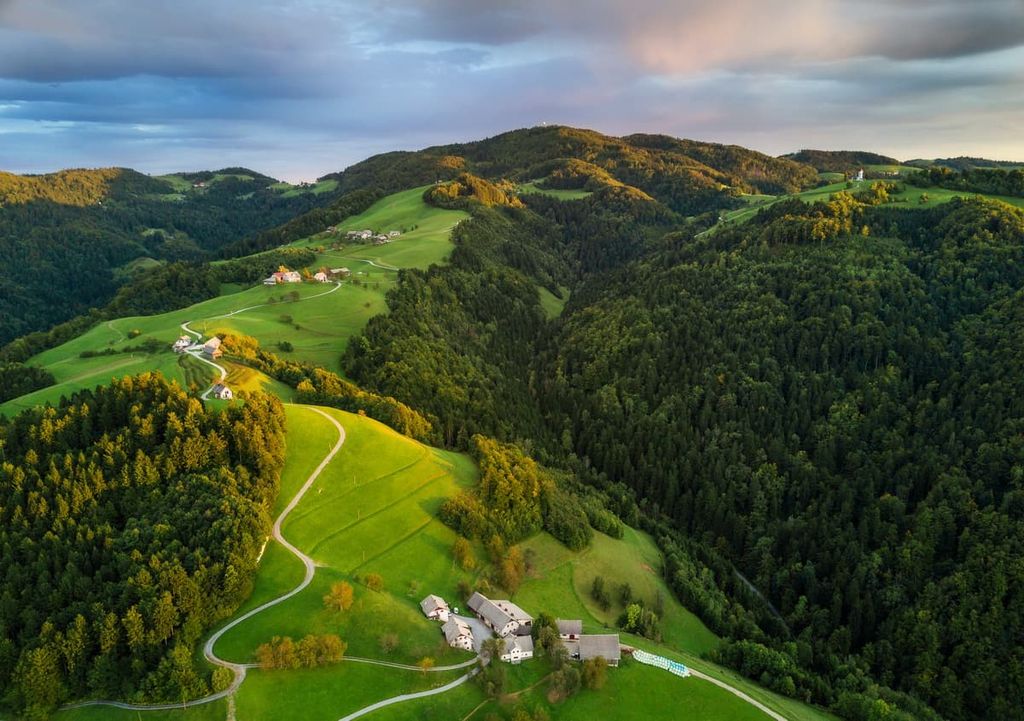
As a general overview of Slovenia’s fauna, common birds include owls like the eagle, tawny, and long-eared owl, raptors like hawks and short-toed eagles, and other birds like ravens, woodpeckers, magpies, and crows.
Common mammals that can be found throughout the country include herbivores like the roe deer, Alpine ibex, and chamois, small mammals like marmots, hares, dormice, martens, and hedgehogs.
Carnivores found in the country include Eurasian lynxes, red foxes, European jackals, and wildcats. The country also has small populations of wolves and brown bears, and notable non-mammal populations of vipers, grass snakes, and the unique, extraterrestrial-seeming olm.
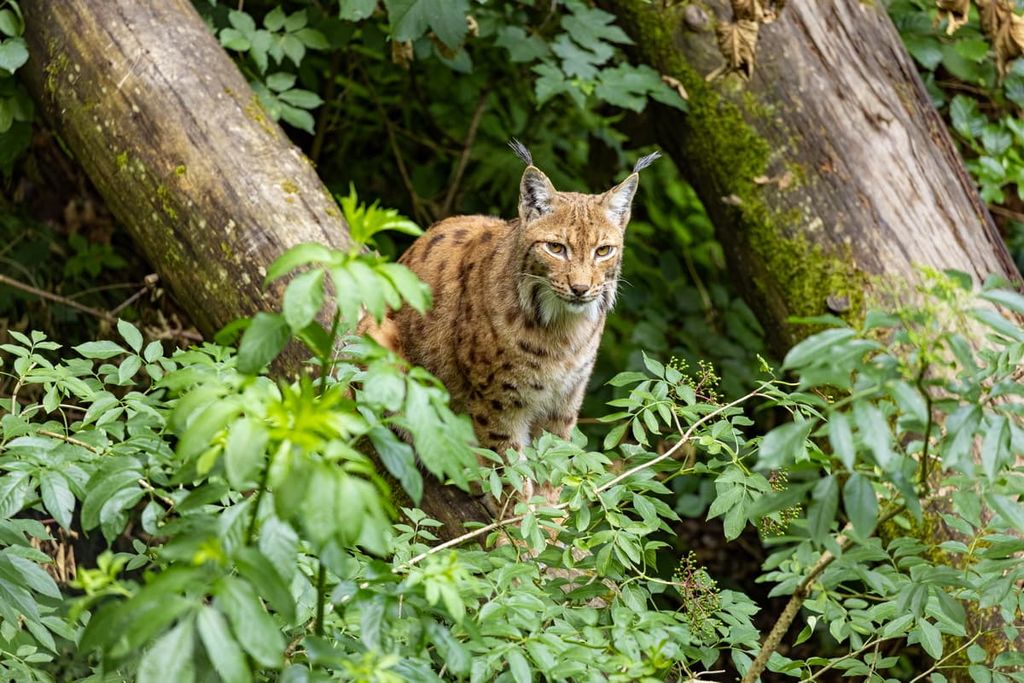
Additionally, Slovenia has four terrestrial ecoregions: the Alps conifer and mixed forests, the Dinaric Mountains mixed forests, the Illyrian deciduous forests, and the Pannonian mixed forests, each with certain overlapping traits but their own unique ecological flairs.
Considered a type of transition region between Europe’s Mediterranean south and continental north, the Alps conifer and mixed forests can be found in northern Slovenia, largely along its northwestern borders.
Here, broadleaf deciduous trees dominate lower elevations, such as the European, sessile, and downy oak, with some evergreen sclerophyllous vegetation as it nears a more Mediterranean climate.
Higher in the mountains, European beeches intermingle with conifers like the Norway spruce, bog pine, and silver fir. Further away from the coasts are populations, sometimes sparse, of Swiss pines, Scots pines, and European larches.
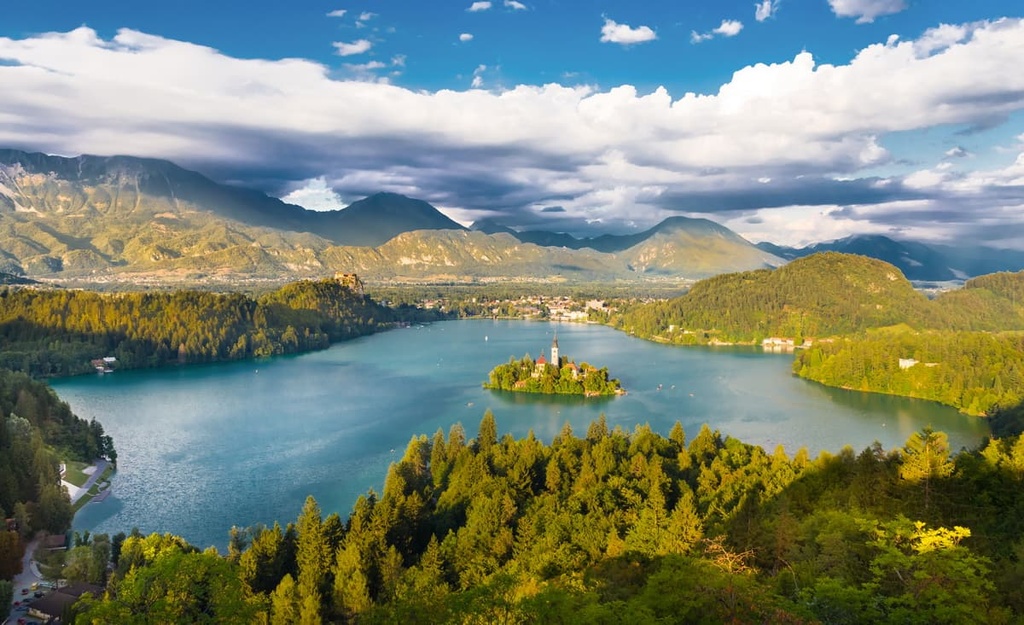
As for fauna, roe and red deers, wild boars, chamois, and ibexes. Some notable birds of the Alps include the Western capercaillie and rock ptarmigan, and there are also 21 species of amphibian and 15 species of reptile within the ecoregion, though not all live in Slovenia.
Running diagonally through western Slovenia along the forested mountain sides of the Dinarides are the Dinaric Mountains mixed forests.
This ecoregion sees many of the same montane flora as the Alps forests with European beeches, silver firs, Norway spruces, and European black pines. What is unique, however, is the karstic nature of the Dinaric forests, which gives way to Dinaric calcareous silver fir forests.
Oriental and common hornbeams, European ashes, field elms, South European flowering ashes, and Turkey oaks occupy lower elevations in this ecoregion. There are also many colorful shrubs and wildflowers in the country, especially in the high-altitude meadows of Triglav, like the Triglav rose, hairy alpenrose, Clusius’ gentian, Zois’ bellflower, alpine toadflax, edelweiss, and Triglav hawksbeard.
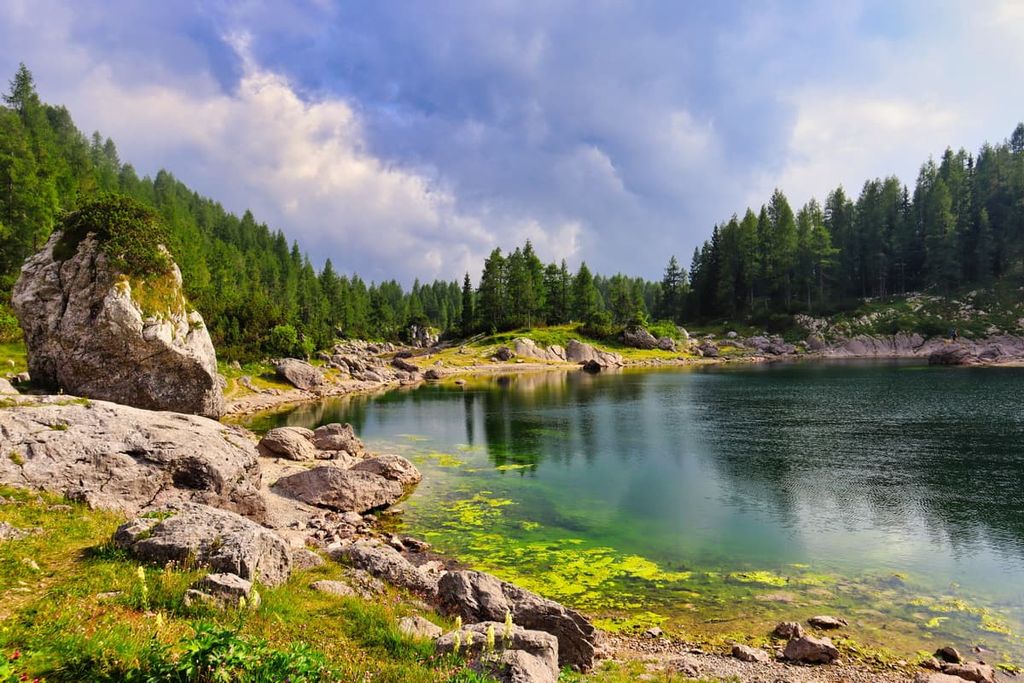
Mammalian fauna here is similar to that of the Alps forests, though Slovenia’s brown bear population can be found in the Dinaric forests of Triglav National Park.
Some other animal species that can be found in the Dinaric forests of Slovenia are the white-throated dipper, Eurasian pygmy owl, alpine marmot, capercaillie, alpine newt and salamander, common European adder, black woodpecker, willow tit, rock ptarmigan, and black grouse, among many others.
Interestingly, in the same Triglav region where the Dinaric forests are found, there are also clusters of peat bogs and wetlands, home to bustling aquatic and semi-aquatic ecosystems of fish, amphibians, and insects.
On Slovenia’s coast and southernmost border with Italy are Illyrian deciduous forests. This is a Mediterranean forests, woodlands, and scrubs biome with a similar tree profile to the Dinaric and Alpine forests above 1,000 m (3,281 ft). In particular, this ecoregion has European beeches alongside conifers like the Norway spruce, silver fir, and European black pine.
Lower elevations in this ecoregion are home to deciduous oaks like the downy oak and Turkey oak, as well as South European flowering ashes and oriental hornbeams. Closest to the coast, particularly at lower elevations, are a medley of maquis shrubs and evergreen trees, such as the evergreen oak, cade juniper, and Arbutus unedo.
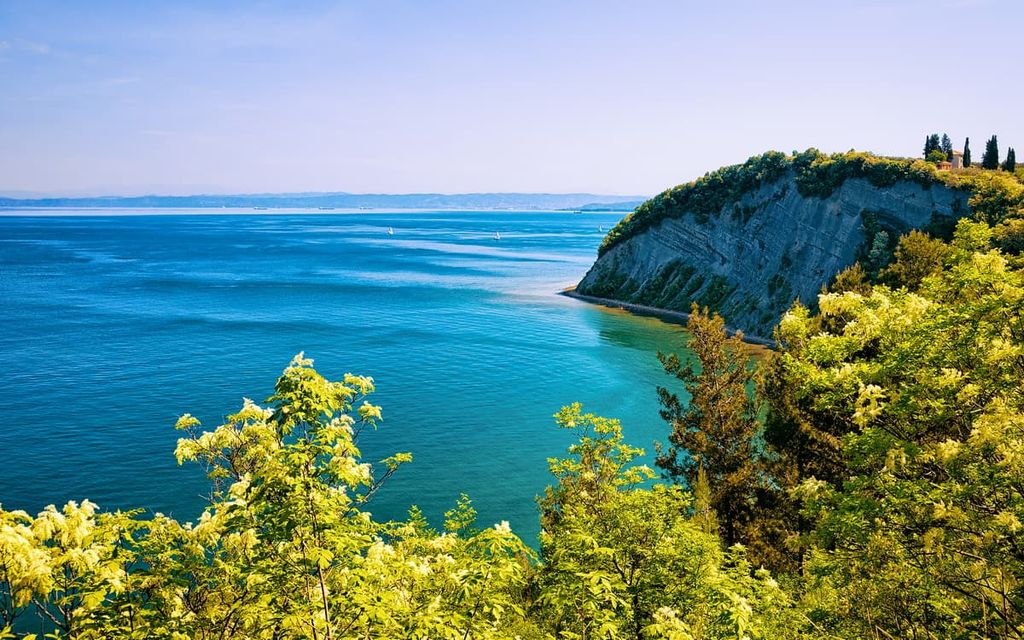
Illyrian deciduous forests are known for their many raptors, such as the griffon vulture, kestrel, and peregrine falcon, and otherwise are home to fairly typical Slovenian mammal species. Interestingly, these forests are also known for their unique and diverse aquatic fauna, like the Niphargus, a type of crustacean; many species of shrimp; and many endemic species of fish.
Pannonian mixed forests take precedence in Slovenia’s northeastern corner and swaths of its central regions, namely in the Pannonian plain and in the depression next to the Dinaric Mountains.
These forests are made of communities of mixed-oak forests, including sessile, common, and bitter oaks, and other mixed forests of oaks and hornbeams. Lowlands, herbaceous and grassy steppes, and azonal floodplains are also part of the ecological profile of Pannonian mixed forests.

The animals of the Pannonian mixed forests are fairly consistent with the rest of Slovenia, though smaller mammals like shrews, moles, and bats are especially prominent.
Non-mammals that may be found include Orsini’s viper, the Italian crested newt, the smooth newt, and all sorts of birds, such as thrushes, owls, nuthatches, warblers, whitethroats, capercaillies, ring ouzels, and wallcreepers.
Human habitation has been occurring in Slovenia since before written records, with Cro-Magnon artifacts and various caveman tools and instruments having been found that date back thousands upon thousands of years. Findings of 4,500 year-old pile dwellings, signifying longer-term settlement, further signify the extensive history of humanity in Slovenia.
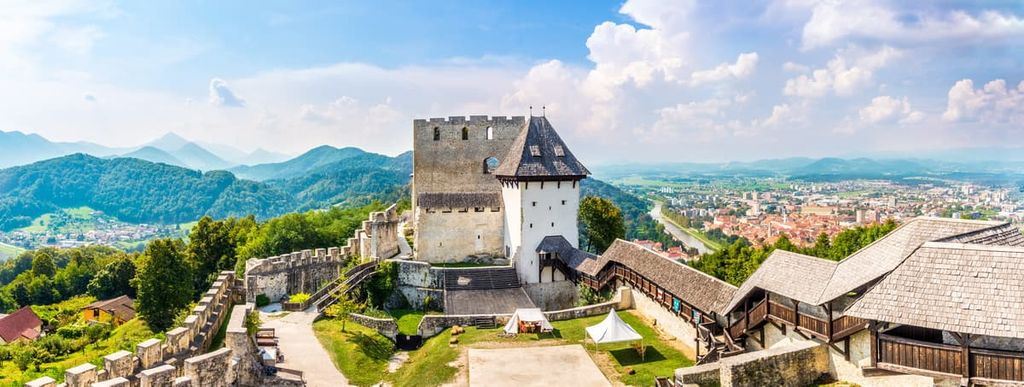
The Late Bronze Age in Slovenia was dominated by people of the Urnfield culture and later people of the Hallstatt culture. It is believed the Urnfield people spoke a sort of Italo-Celtic. As such, it has been theorized that Proto-Celtic originated among them as well, which the Hallstatt likely spoke, too.
Eventually, various Celtic tribes came to populate Slovenia, alongside the Indo-European Illyrians. It was largely these two cultures until around the first century BCE, with the arrival of the Romans.
The Romans split what is now Slovenia between Roman Italia (the Roman homeland) in the west, and the provinces of Pannonia and Noricum. A few major outposts, used mainly either for trade or military purposes, were established in Slovenia, including one that would eventually become modern Ljubljana; roads, too, were established across the country.
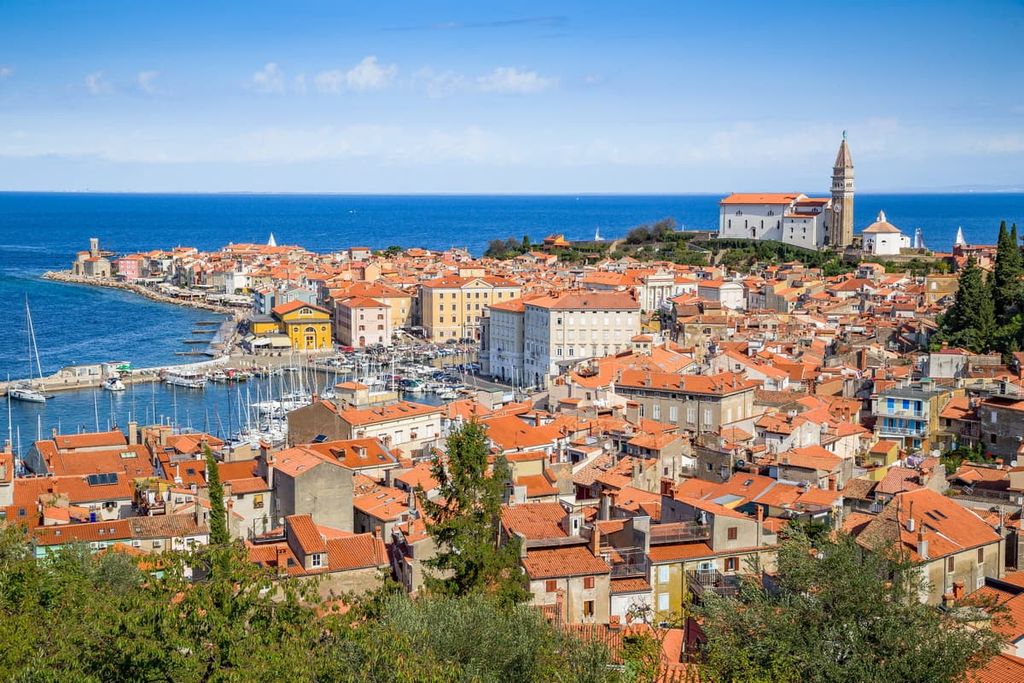
As the empire crumbled in the fifth and sixth centuries CE, Slovenia was prone to raids from both the east and west, particularly from the Huns and Germanic peoples. Toward the end of the sixth century, Slavic tribes began to migrate to the Slovenian Alps.
This led to a period of unification of the Alpine and Western Slavs under King Samo in the early seventh century, a union that continued until Charlemagne took control of the region in the ninth century.
Christianity came to what is now Slovenia during the early Middle Ages, perhaps as early as the eight century. What is now Slovenia was divided up into a number of regions under the Holy Roman Empire of Emperor Otto I.
Throughout the eleventh through fourteenth centuries, what is now Slovenia was ruled by a succession of different noble families. The Slovene territory was more or less reduced to its current size by the fifteenth century after it had been taken over by the Habsburgs, raided by the Turks, and then subject to a number of peasant revolts.
What is now Slovenia was put under the control of the Austrian Empire during the late eighteenth century. The region was then considered part of the Illyrian provinces under Napoleon. Most ethnic Slovenes during this time inhabited Carniola as well as parts of Hungary and Austria.
The late nineteenth century and early twentieth century saw widespread migration out of what is now Slovenia. Approximately 15 percent of Slovenes immigrated elsewhere during this time to places such as the US, Argentina, Egypt, and Germany. However, by the late nineteenth century, there was also a cultural revival in what is now Slovenia as well as the start of a Slovenian nationalist movement.
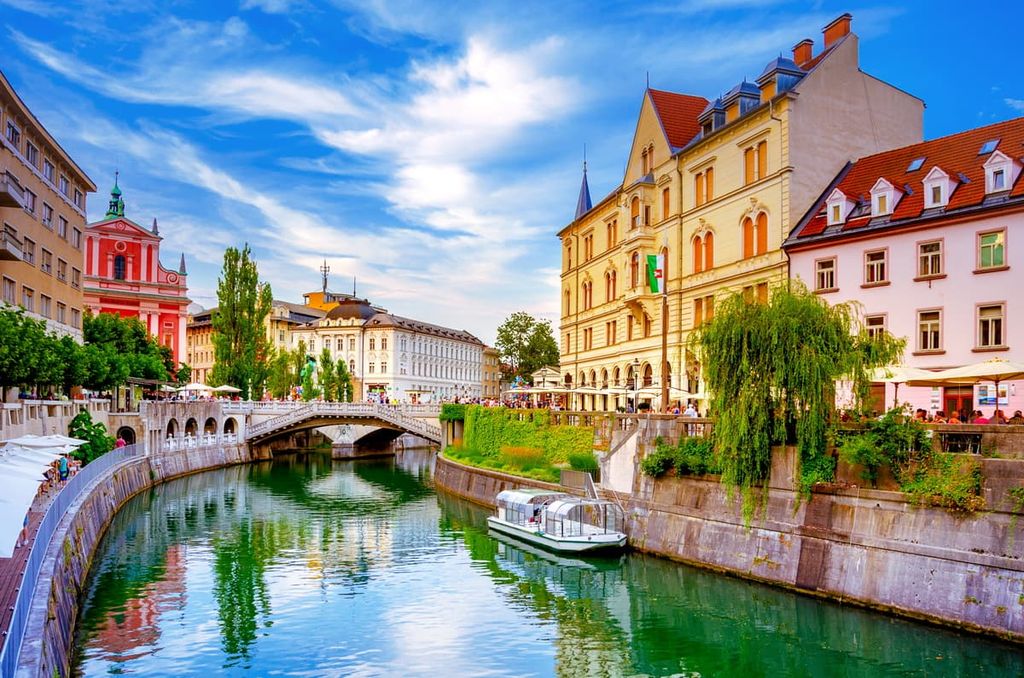
During World War I, hundreds of thousands of Slovenes fought for the Austro-Hungarian Army. Afterward, border adjustments meant that many ethnic Slovenes actually lived in what is now Italy after the war. After the war, Yugoslavia (then the Kingdom of Serbs, Croats and Slovenes) was established in 1918.
The interwar years were a period of heightened industrialization in what is now Slovenia. However, during World War II, Slovenia’s current borders were trisected and annexed to Fascist Italy, Nazi Germany, and Hungary. The region was invaded by Axis forces in 1941 and the local forces were quickly defeated.
Yugoslavia was liberated in 1945 and, after the war, it became known as the People’s Federal Republic of Yugoslavia.
Slovene independence movements built up steam again during the 1980s and, in 1989, Slovenia declared a parliamentary democracy. The country eventually became independent in 1991, though it wasn’t recognized by other countries until 1992. Slovenia joined the European Union and NATO in 2004 as well as the Eurozone in 2007.
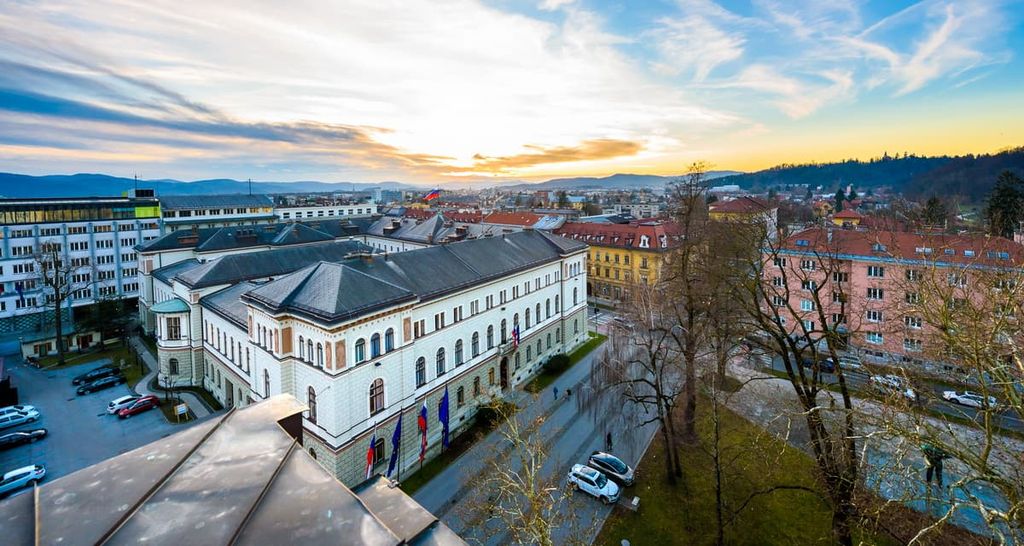
These days, Slovenia is considered to have one of the strongest economies of any of the Slavic countries outside of the Czech Republic. The country has a strong automotive manufacturing industry as well as an ever-growing tourism sector. Nevertheless, its beautiful landscapes mean that it's well worth a visit for any adventurous traveler.
Slovenia has no shortage of fantastic hiking areas. Here are some of the best hiking areas to check out in the country:
Cross-country trekking trails are abundant in Slovenia, stretching from mountain range to mountain range, border to border, sea to plains.
The most famous of these is perhaps the Slovenian Mountain Trail which starts in Maribor, runs through the Pohorje in the northeast and then through the Julian Alps, Kamnik-Savinja Alps, and Karawanks, before ending at the Adriatic Sea in the southwest (or vice-versa).
The Slovenian Mountain Trail can be begun and finished anywhere, with mountain huts plentiful along the way, and offers endless opportunities for seeing dozens, if not hundreds, of Slovenia’s beautiful peaks.

Furthermore, sections of the Red and Purple trails of the Via Alpina run through Slovenia. The 220 km (137 mi) Red Trail crosses karst lands and the Dinarides en route to the Julian Alps before departing for Austria, while the Purple Trail starts in the heart of the Triglav massif and crosses the Karawanks and Kamnik-Savinja Alps.
Portions of the European long-distance paths also run through Slovenia, namely the E6, running north-south through central Slovenia, and the E7, running east-west through central Slovenia. There is also the E12, which runs for about 50 km (31 mi) along Slovenia’s coast.
The Alpe Adria Trail connects Slovenia with its nearby Austrian and Italian neighbors in a sequence of 43 stages each around 20 km (12 mi) long for a total of around 750 km (466 mi). These paths lead to some of the most beautiful landscapes in each of the 3 countries. The trails are generally designed for fun rather than for challenge, with only moderate changes in elevation.
Though the main attraction of the Julian Alps may be Triglav National Park, there are plenty of the Alps to explore outside park boundaries. The Juliana Trail, a 270 km (168 mi) circle around the Julian Alps, divided into 16 more-digestible sections about 17.5 km (11 mi) each, rests at the steps of these impressive peaks, winding under them and offering amazing views of the mountains jutting into the sky.
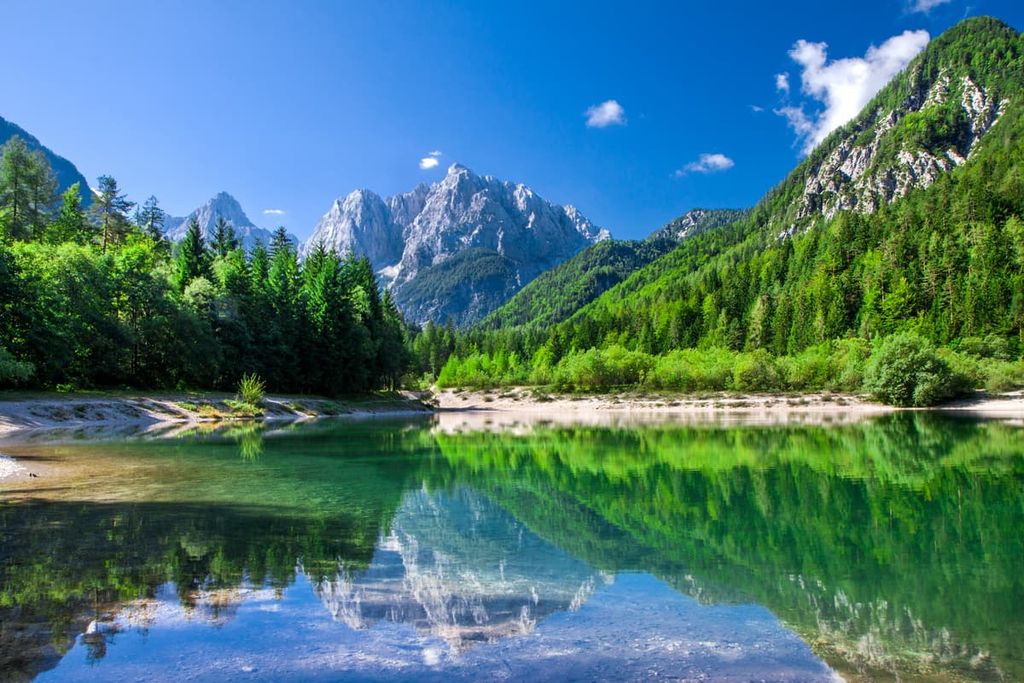
For experiencing both the natural beauty and historical significance of the area, there is the 400 km (249 mi) Walk of Peace through the Soča Valley, once a battlefront in World War I. This path leads into Italy, too, and features karst landscapes, museums, monuments, rivers, and beautiful mountain scenery all the while. About 100 km (60 mi) of the Walk of Peace is a loop trail split into six sections, each section perfect for its own day trip.
The Kamnik-Savinja Alps toward the eastern part of the country host many magical vistas and landscapes. The 37 km (23 mi) Solčava Panoramic Road, showcasing the area’s mountains, valleys, and expansive farmland, can also be traversed via shorter day trips, with 18 stops along the way.
Shorter day trips include the Logar Valley Trail, a 7 km (4.3 mi) trail leading to one of Slovenia’s tallest waterfalls, and the Bear Trail, a 2 hour trail leading to a Stone Age archaeological site.
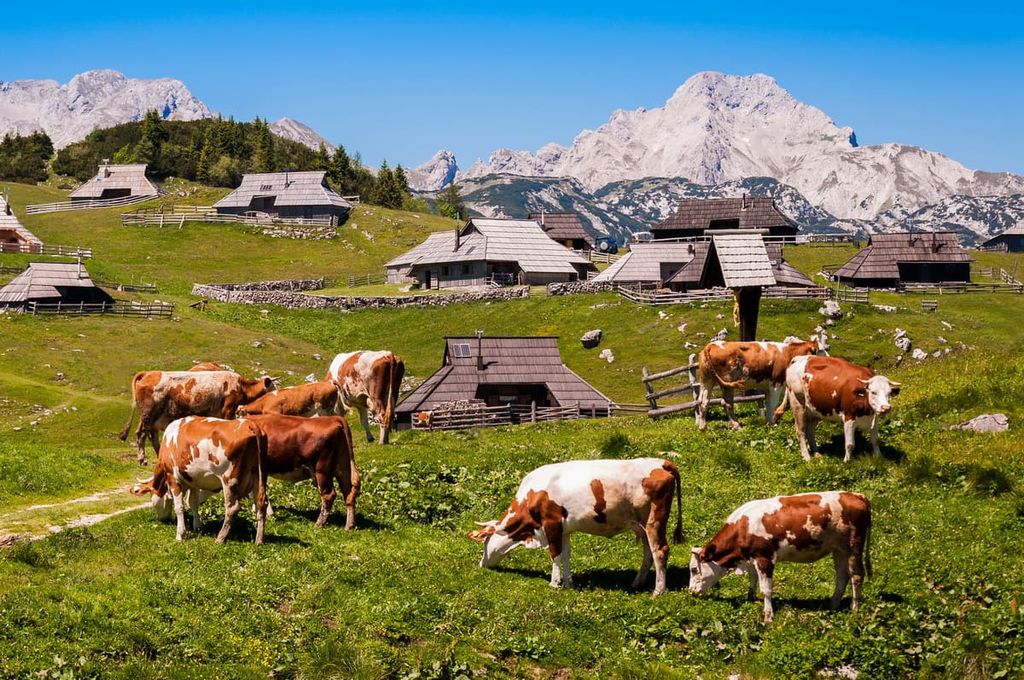
Grintovec mountain, perhaps the Kamnik Alps’ main attraction, can be reached either by long mountain hikes or more challenging climbing routes, usually taking around 2 to 3 hours to complete.
Some additional notable options in the range are the paths to Kamnik-Savinja’s two saddles, Kamnik and Kokra, and the path up to the St. Primus and Felician Church, overlooking the Ljubljana basin. Other trails of the Kamnik-Savinja Alps include:
Noted for their many shining white limestone peaks, the Karawanks, adjacent to the Julian and Kamnik-Savinja Alps, provide many great hikes, with marked trails leading to most of their summits, and some opportunities for climbing.
The most famous of these hikes, of course, is the range’s tallest peak, Stol. Terraces with panoramic vistas, bright alpine meadows, forested slopes, rocky climbs, and steep ravines mark this mountain. The route typically takes around 3 to 5 hours to complete depending on what starting point is chosen.
There is also the hike up to the summit of Košutnikov along the Košuta ridge. This is a loop of around 8.1 km (5 mi) along Slovenia’s longest mountain, with grassy slopes and narrow, rocky ridges.
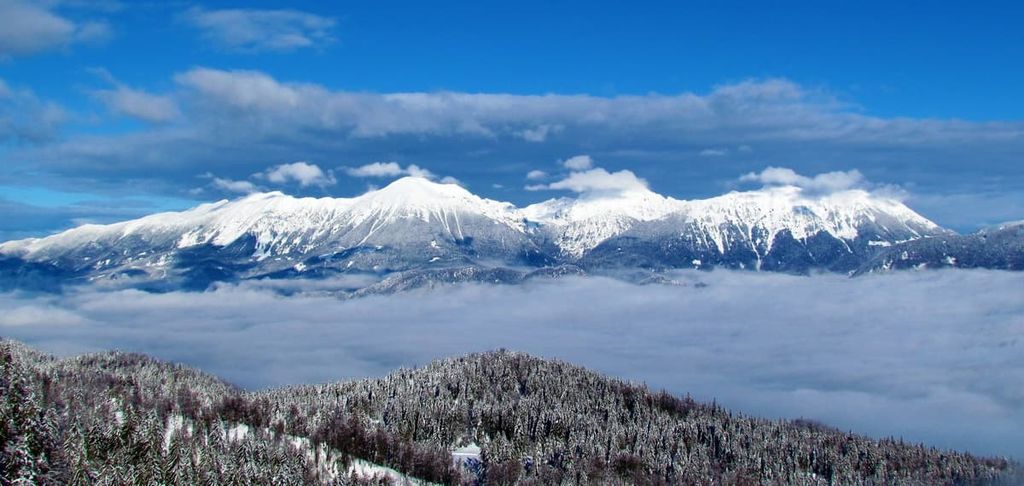
Other notable hiking areas of the Karawanks include:
Pohorje and nearby Maribor are host to many beautiful trails through the mountains, lakes, grasslands, bogs, and vineyards that comprise the region.
This includes the Šentilj Trail, a 56 km (35 mi) hike over Slovenian meadows, with all sorts of historical sights–churches, castles, and chapels–along the way. It also includes the 20 km (12 mi) Kozjak Trail through the vineyards and farms of Pohorje’s hills.
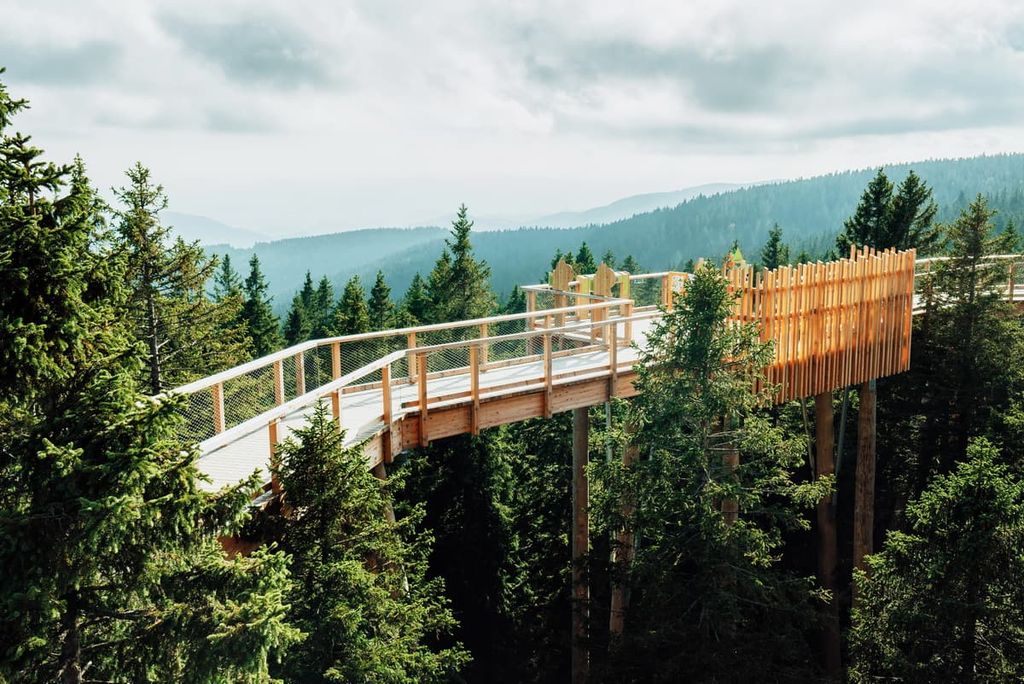
The 4.4 km (2.7 mi) Žavcarjev vrh trail runs along the forested hills of the Drava Valley, up to its eponymous summit. There is also the Aljaž Way Trail, 10 km (6.2 mi) of pristine nature, old farms, and vistas of the Drava Valley.
Additionally, you can check out 8.5 km (5.3 mi) trail to the Lovrenška Jezera lakes, a collection of small peat moor lakes with unique flora and ecosystems, and the 6 km (3.7 mi) Bistriški Vintgar Gorge trail, the latter of which is a half-day trip to the cascading crystal Bistrica stream, among many others.
Other trails of Pohorje and Maribor include:
As Slovenia’s only national park, Triglav National Park is a must-visit for anyone wishing to explore the beautiful mountainous landscape of Slovenia. Triglav can be climbed in a multitude of ways, with numerous trails of varying difficulty that lead up to its summit.
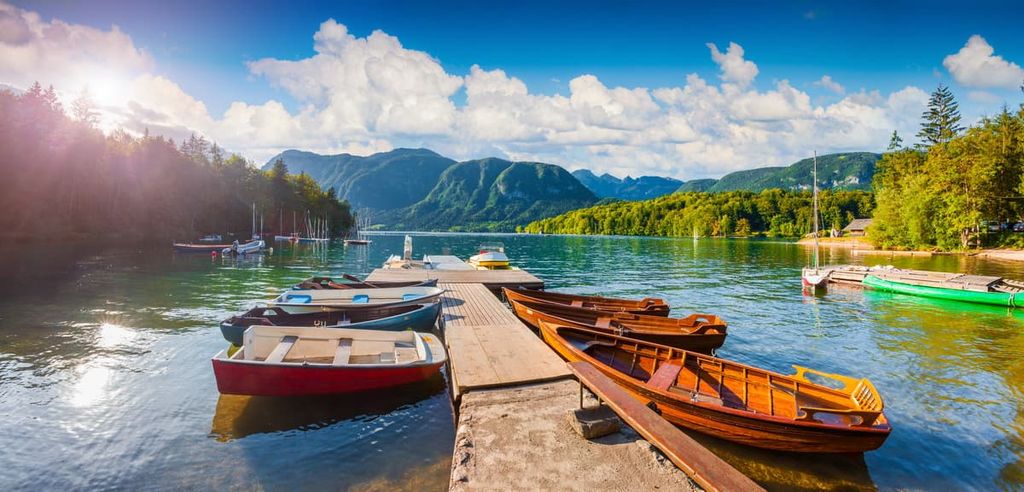
These typically take between 2 to 3 days to complete, with mountain huts for lodging along the way, and should be completed with a tour group or a private guide unless you’re already a competent mountaineer. No matter which route is chosen, all lead to the magnificent peak, where the Julian Alps unfold around you in a spectacular panoramic fashion.
To experience Triglav’s thick forests, running rivers, and turquoise waterfalls, there are numerous trails that wind in and out of the park.
The 12 km (7.5 mi) Triglavska Bistrica Trail hikes over rivers, through the woods, and across grasslands, where the great mountain peaks loom overhead. Meanwhile, the Soča Trail leads from the small town of Bovec to the park, a 25 km (15.5 mi) verdant thread through gorges, botanic gardens, and crystal-blue water.
Other trails of Triglav National Park include:
As hiking trails seem to span every inch of Slovenia, there are many more hiking areas that are worth considering for anyone eager to explore Slovenia’s pristine country. These include:
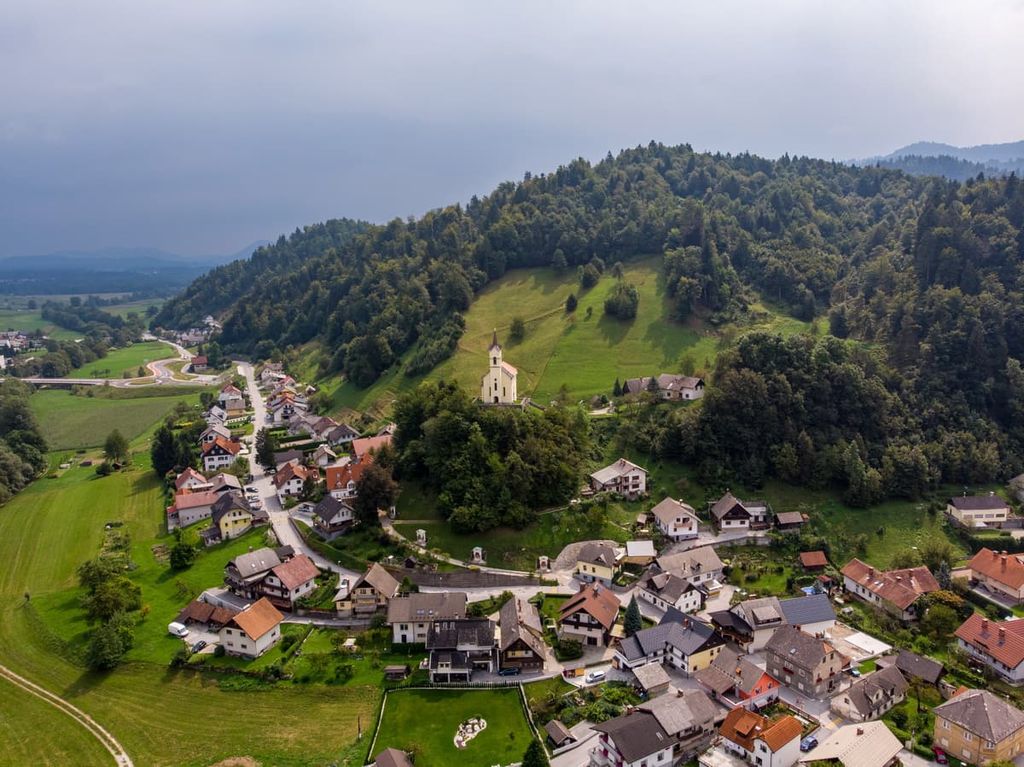
For skiing and snowboarding enthusiasts, there are more than 50 ski resorts in Slovenia, which are located throughout the country, but mainly in its northern part in the Julian Alps and Prealps, where you will find most of the resorts, including also the largest of them. It is also one of the main areas for skiing in the Balkans and Southeastern Europe.
The largest ski resort in Slovenia is Mariborsko Pohorje or just Maribor in the Pohorje Range with more than 40 km (25 mi) of slopes and more than 15 ski lifts. It is also the main ski resort near Ljubljana, the capital of the state.
Other major areas for skiing in Slovenia with more than 10 km (6 mi) of slopes and more than 10 ski lifts each include the following in descending order of size:
Check the Slovenia ski resorts map in the World Mountain Lifts section of the site. It includes information about open ski lifts / slopes in Slovenia in real-time with opening dates and hours. There are also year-round cable cars, funiculars, cog railways, aerial tramways, and all other types of mountain lifts.
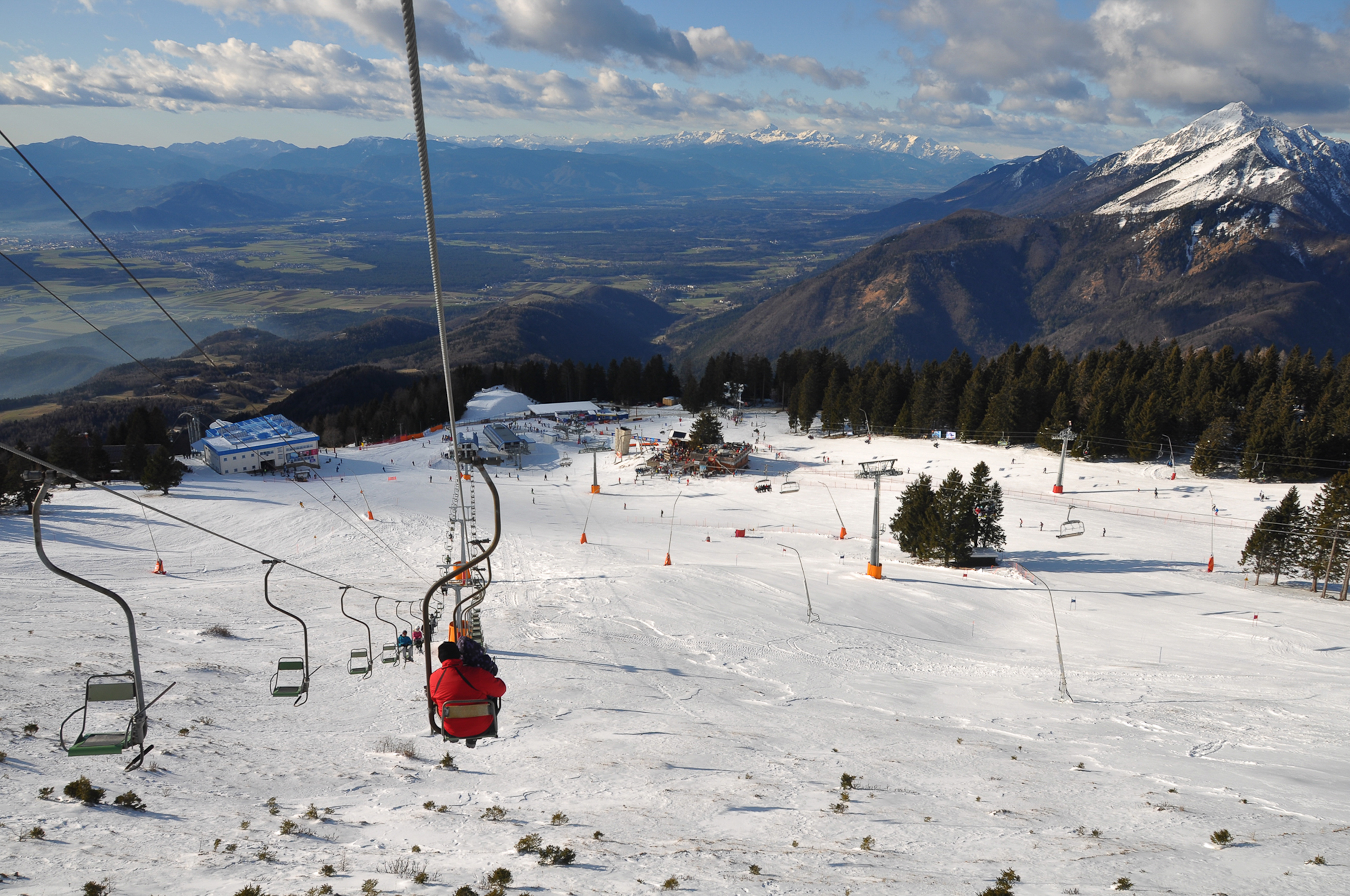
Looking for a place to stay in Slovenia? Here are some of the best cities and villages to check out during your stay:
Though Ljubljana, at around 300,000 people, may seem like a smaller European capital, the city bursts with enough life, culture, and charm to rival any large metropolis.
Verdant hills, the blue Ljubljanica River, and classic red-roof or domed buildings in Art Nouveau, Gothic, and Baroque styles work in harmony to create an aesthetic marvel of a city, while bustling squares, markets, festivals, and café-lined streets bring the streets to life.
Famously, the city is home to Ljubljana Castle, atop the aptly named Castle Hill that overlooks Ljubljana, where the charming cobblestone roads and courtyards of the Old Town lie below. Furthermore, Slovenia’s traditional architecture, monuments, fountains, and churches can be experienced in its many squares, like Prešeren, Congress, and Town Square.

Both the historical and the contemporary arts and culture of Slovenia flourish in Ljubljana. Nightlife and modern art in the city is abundant in Metelkova, an autonomous neighborhood where art galleries and studios, nightclubs, and modern art museums thrive. The Šiška Cultural Quarter is another notable art and cultural hub where the avant-garde and the contemporary take form in concerts and museums.
Meanwhile, other institutions like the National Gallery, Slovenian Museum of Natural History, and the Slovenian Railway Museum, offer glimpses into the country’s rich past, as do the many cultural festivals and events that occur throughout the year, such as the Ljubljana Festival. And with many scenic bridges and green spaces like Tivoli City Park or Ljubljana Botanical Garden, there are endless paths to walk and things to see in Ljubljana.
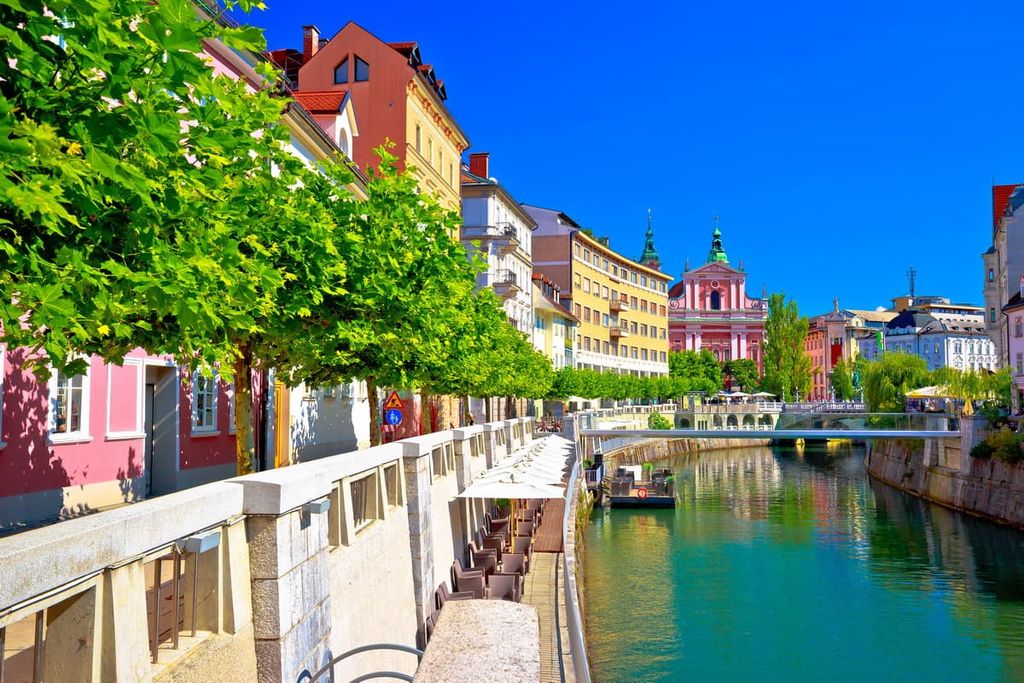
Ljubljana is near the Ljubljana Jože Pučnik Airport, which connects to other major cities of Europe and Asia Minor. There are also several Pan-European, national, and international trains that stop in the city, making transport throughout Slovenia or to and from other countries relatively easy, as well as passenger trains and buses for getting around the city proper.
Sat upon the scenic Drava River in the northeastern corner of Lower Styria is Maribor, Croatia’s second-largest city with a population of around 100,000 people. This city teems with history at every corner, from its Old Town to the baroque Maribor Castle to the still-standing medieval fortifications, the Gothic cathedrals, the Renaissance-style Town Hall and a 600-year-old synagogue—Europe’s second-oldest.
The square of Grajski Trg, beholden to Maribor Castle and the famous statue of St. Florian, is one of the liveliest centers in Maribor, with plenty of cafés and restaurants. Glavni Trg, home of the Town Hall, Maribor’s first brewery, a farmer’s market, and no shortage of places to eat and shop, is likewise an ideal place to experience Maribor, especially with its stunning and ornate traditional architecture. Traversing these squares are charming, narrow stone-lined streets.
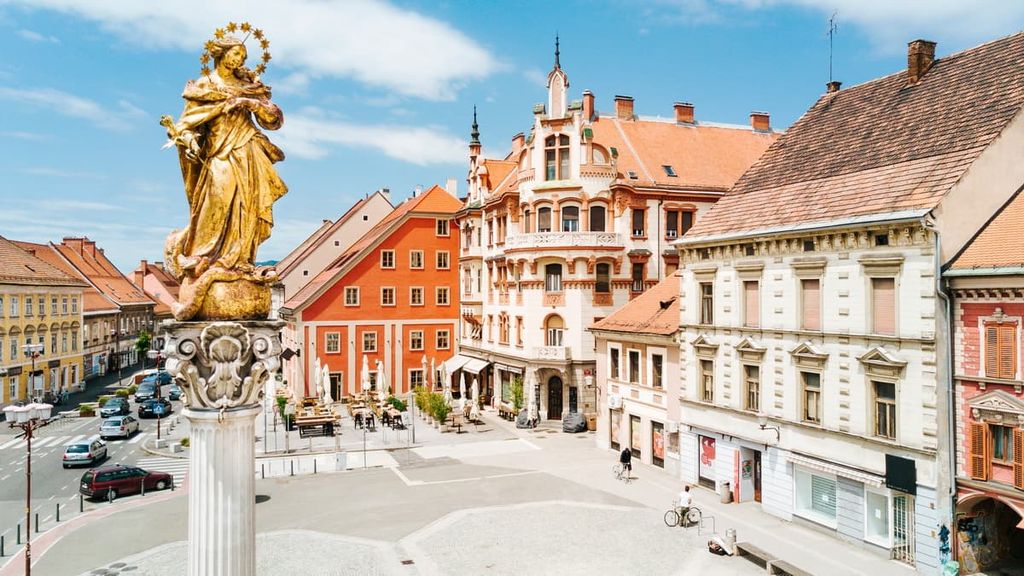
The city is also known for its relaxing riverside waterfront, high-quality wine and nearby vineyards, the nearby alternative cultural center of Pekarna where all sorts of cultural events take place, and the two-week summer Lent Festival, where the streets come alive with musical, theatrical, and dance performances. Greenery flourishes both inside the city, with Mestni Park, and outside, with the picturesque Piramida HIll looming over it.
Maribor’s railway station is part of the national Slovenian Railways system, connecting it to any other notable city and town in the country. It can also be accessed from Austria via the Tauern Railway.
Explore Slovenia with the PeakVisor 3D Map and identify its summits.








